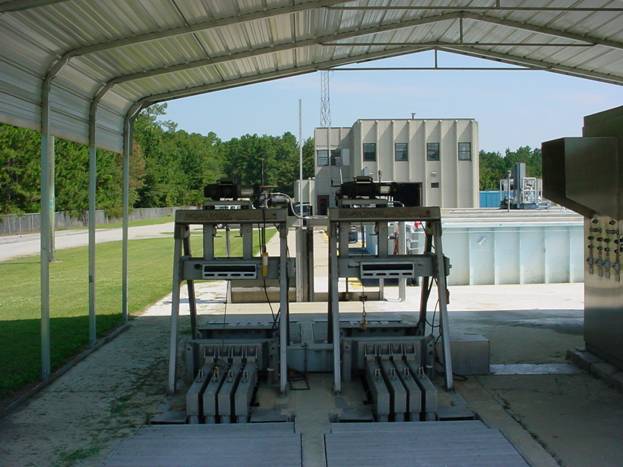Is my water safe to drink?
A definitive answer for countries as large as the United States and Canada is impossible, of course, but for the most part, yes. Nearly all public water supplies in the United States meet the US Environmental Protection Agency’s standards for safe drinking water. Standards are typically numerical limits on the concentrations, or amounts, of a particular contaminant. In cases where a contaminant cannot be readily measured, such as particular microbiological organisms that can sicken humans, water supplies must provide specific treatment, such as disinfection and filtration, to ensure safe water.
Where does my drinking water come from and what treatment takes place?
The raw water supply of Statesboro’s drinking water is from the Floridan Aquifer. The aquifer is a Limestone Formation running under the entire county and extends south. Raw water is withdrawn from the Floridan Aquifer utilizing six active deep wells. Water Treatment consists of chlorination (disinfection), fluoridation (children’s teeth and bones), and phosphate (iron and corrosion control). This treatment takes place at each well site.
How are germs that can make me sick kept out of my drinking water?
A chemical called a disinfectant is added to drinking water at the treatment plant. Chlorine is the most common disinfectant used in the United States and Canada . Almost all the rest use a close relative of chlorine called chloramines. Chlorine and chloramines kill germs, but in this application do not harm humans. More recently, some water utilities have installed ozone as a disinfectant, and ultraviolet (UV) light has also emerged as a promising disinfectant. Although private well water is usually germ-free and not disinfected, it should always be tested at least once – annually is better – to uncover any possible germ contamination.

This is a picture of Statesboro’s Wastewater Treatment Plant’s ultraviolet (UV) light disinfectant.
Does drinking water contain calories, fat, sugar, caffeine, or cholesterol?
NO!
Is the fluoride in my drinking water safe?
Yes. When added or naturally present in the correct amounts, fluoride in drinking water has greatly improved the dental health of American and Canadian consumers. Early studies suggesting that fluoride was a possible cancer-causing chemical probed to be incorrect. A 1993 report by the National Research Council of the National Academy of Sciences, Health Risk of Ingested Fluoride , states, “Currently allowed fluoride levels in drinking water do not pose a risk of health problems such as cancer, kidney failure, or bone disease.” Excess fluoride in water is removed by the water supplier using special treatment. For one reason or another, about 40 percent of Americans do not have adequately fluoridated water supplies, although fluoridation is mandatory in many states. Recently, the American Dental Association changed its recommendation on dietary supplements for children, advising no fluoride supplement be given to infants younger than six months old. You may want to talk to your doctor about this. When present even in correct amounts, fluoride and the disinfectant chloramines do make water unsuitable for use in kidney dialysis machines. Dialysis patients should check with their water supplier or dialysis center about their water source.
Is water with Chlorine in it safe to drink?
Yes. Many tests have shown that the amount of chlorine found in treated water is safe to drink, although some people object to the taste. The US Environmental Protection Agency recently established maximum allowable levels of “residual” disinfectants, which are added to water as it enters the distribution system to protect against germs.
Drinking water often looks cloudy when first taken from a faucet and then it clears up. Why is that?
The cloudy water could be caused by tiny air bubbles in the water similar to the gas bubbles in beer and carbonated soft drinks. After a while, the bubbles rise to the top and are gone. This type of cloudiness occurs more often in the winter, when the drinking water is cold. Another cause of cloudiness in cold water comes from calcium. In certain waters, the nontoxic chemical calcium carbonate will precipitate when it is cold. As it is white, this precipitate can cause the water to look cloudy. In this case, however, the particles settle to the bottom (usually in about 30 minutes) in contrast to the air bubbles discussed about that rise to the top of the water fairly quickly. Water with calcium carbonate precipitate in it is perfectly safe to drink or use for cooking, though it may be unappealing to look at.
What should I do to avoid cold-weather problems with my pipes?
There are several necessary steps homeowners should take to avoid freezing pipes. First, disconnect and drain outdoor hoses. Detaching the hose allows water to drain from the pipe. Next, insulate pipes or faucets in unheated areas. Make sure you located your master valve in case pipes freeze and rupture. Also, check with your local water company; you may be responsible for keeping the meter from freezing as well. In other places, meters must be maintained by utility personnel. If you are expecting severe cold weather and are worried about your pipes freezing, you can also leave a small stream of water flowing in the bathroom during the worst of the cold spell. Let just enough of water through to produce a steady, thin stream. Any extra flow is a severe waste of water.
What is hard water?
“Hardness” in drinking water is caused by two nontoxic chemicals (usually called minerals) – calcium and magnesium. If calcium and/or magnesium is present in your water in substantial amounts, the water is said to be hard because making a lather or suds for washing is hard (difficult) to do. Thus, cleaning with hard water is hard/difficult. Water containing little calcium or magnesium is called soft water.
What is that white stuff in my coffee pot and on my showerhead and glass shower door? How can I get rid of it?
Minerals dissolved in water tend to settle out when water is heated or are left behind when it evaporates. These minerals are white and accumulate in coffee pots and on showerheads and glass shower doors. To remove these minerals, fill the coffee pot with vinegar and let it sit overnight, or soak the showerhead overnight in a plastic bowl filled with vinegar. Be careful not to spill this mixture. When you are done, carefully discard the contents of the plastic bowl down a drain, and flush the container and sink drain with plenty of water. NOTE: Rinse the coffee pot or showerhead thoroughly after treatment and before use. Pouring the excess hot liquid out of your coffee pot when you are finished with it will help somewhat in preventing this problem. White spots on glass shower doors are difficult to remove with vinegar because the spots dissolve very slowly. A better idea is to prevent the spots from forming by wiping the glass door with a damp sponge or towel after each shower.
Should I buy bottled water?
You don’t need to buy bottled water for health reasons if your drinking water meets all of the federal, state, or provincial drinking water standards (ask your local supplier). If you want a drink with a different taste, you can buy bottled water, but it costs up to 1,000 times more than municipal drinking water. Of course, in emergencies bottled water can be a vital source of drinking water for people without water.
Where does the water go when it goes down the drain?
If you are on a sewer system, all of the drains in your house are connected to a single pipe that leads to the street. The pipe in the street collects the wastewater form all the homes in your area and takes it a larger pipe that collects water from other streets. The wastewater then flows into still bigger pipes that connect various neighborhoods. Think of large tree with your house at the tip of a branch near the top. Like the tree branches that are bigger nearer the ground, the pipes in the wastewater collection system are larger and contain more liquid as they near the wastewater treatment plant. Here, the wastewater is treated and cleaned so that it can be put back into the environment without harming anything. If you are not connected to a sewer system, the liquid wastes from your home go into a septic tank, where most of the solids settle out. The water then goes into a leach field, pipes buried in the ground that have holes in the bottom. The water seeps out of these holes and into the ground.
How does the water company know how much water I use in my home?
Most households have a water meter that measures the amount of water used. For those communities with water meters, a person from the water utility reads the meter on a regular schedule. The previous reading is subtracted from the current reading to determine the amount of water actually used.
Why is some drinking water stored in the large tanks high above the ground?
Two reasons. First, this type of storage ensures that water pressure and water volume are sufficient to fight fires, even if the electricity that runs the water pumps is off. The second reason is to provide an extra source of drinking water during the day when water use is high.
For other questions, please contact Statesboro’s Wastewater Treatment Plant at (912) 681-1161.
FAQ information collected from:
Dr. James M. Symons book Plain Talk About Drinking Water: Questions and Answers About the Water You Drink, 4 th edition. Published in 2001 by the American Water Works Association.
